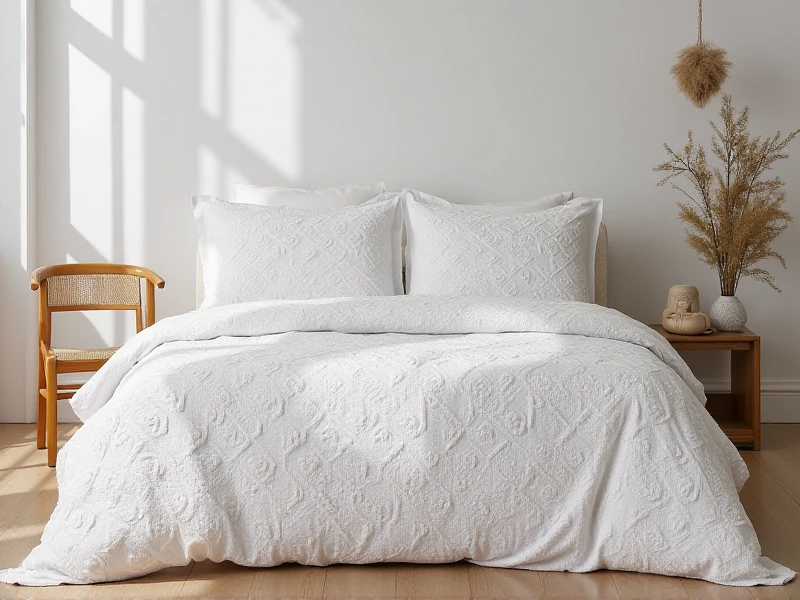Discover the Secrets to Choosing and Using Bed Covers for Better Sleep and Style
2025-06-01

SEO Article on Bed Covers
Are you tired of tossing and turning all night? The solution might be simpler than you think—bed covers. These essentials aren't just about adding a decorative touch to your bedroom; they play a crucial role in your overall comfort, hygiene, and sleep quality. Whether you call them bed covers, bed sheets, or bedding sets, they're a fundamental part of any cozy home. In this comprehensive guide, we'll explore everything you need to know about bed covers, from selecting the right materials and sizes to maintaining them for long-lasting use. By the end, you'll feel confident to revamp your sleep space for ultimate relaxation. After all, a good night's rest starts with the right foundation, and quality bed covers are key to unlocking that.
Understanding Bed Covers: Types and Materials
Bed covers come in various forms, each serving a unique purpose. The most common types include fitted sheets, flat sheets, duvet covers, and quilt covers. Fitted sheets secure snugly over your mattress to prevent slipping, while flat sheets often act as an extra layer for warmth or style. Duvet covers protect your comforter and simplify cleaning, especially if you have pets or allergies. When it comes to materials, cotton is a classic choice—known for its breathability and softness, it suits most climates. Egyptian or Pima cotton offers luxury, while microfiber provides durability and easy care for busy lifestyles. For eco-conscious shoppers, organic cotton or bamboo blends are sustainable options that feel silky against the skin. Linen bed covers add a rustic charm and improve airflow, ideal for hot sleepers. Always consider the thread count: a range of 200-400 ensures comfort without compromising longevity, and it's a myth that higher is always better—focus on weave and material instead.
How to Choose the Perfect Bed Covers for Your Needs
Selecting the right bed covers involves considering your personal preferences and lifestyle. Start with sizing: measure your mattress height to ensure a fitted sheet doesn't gap or bunch. Standard sizes like twin, full, queen, and king are common, but deep-pocket designs accommodate thicker mattresses. Next, think about color and pattern. Neutral tones like white or beige create a serene vibe, perfect for winding down, while bold prints or textures add personality to your decor. If you suffer from night sweats, opt for moisture-wicking fabrics like Tencel or percale cotton to stay cool. For allergens, hypoallergenic bed covers made from tightly woven fibers can reduce dust mites and dander. Budgeting wise, there's a sweet spot—mid-range options balance cost and quality, often outlasting cheaper alternatives. Don't forget seasonality: lighter covers work best in summer, while flannel or fleece versions provide warmth in winter. Try out sample swatches online or check return policies before committing, as comfort is highly personal. Remember, investing in good bed covers isn't a luxury; it's a step toward restful nights.
Key Benefits and Unexpected Perks of Quality Bed Covers
Beyond just aesthetics, top-notch bed covers offer numerous benefits that enhance daily life. First, they protect your mattress from spills, stains, and wear, extending its lifespan and saving you money in the long run. This is essential if you have kids or pets—accidents happen, and bed covers act as a barrier. Second, they regulate temperature: breathable materials like cotton help dissipate heat, reducing night sweats and improving sleep quality. Studies show that comfortable bedding can lead to deeper, uninterrupted sleep, boosting your energy and mood. Third, bed covers contribute to home hygiene by trapping dirt and oils, making routine washing easy. This is especially important for allergy sufferers, as microfiber or polypropylene covers can minimize irritants. Unexpectedly, bed covers also play a role in mental well-being: creating a visually appealing bedroom with coordinated covers can foster calm and reduce stress. Think of it as creating a sanctuary—soft, inviting sheets invite you to relax after a hectic day, enhancing feelings of security and peace.
Tips for Cleaning, Maintenance, and Prolonging Their Life
To keep your bed covers looking fresh and performing well, adopt simple cleaning habits. Always check care labels: most cotton bed covers are machine-washable in cold water to prevent shrinkage, while delicates like silk require gentle cycles. Use mild detergents without bleach to preserve colors and fibers. Wash weekly for hygiene—it reduces bacteria and oils buildup. For duvet covers, close zippers or buttons tightly to avoid snags during washes. Drying methods matter; air-drying prevents heat damage, but if using a dryer, opt for low heat to maintain softness. Ironing isn't always necessary—spread covers flat while damp to avoid wrinkles. Storage wise, fold neatly in a cool, dry place away from sunlight to prevent fading. Deal with stains promptly: spot-treat with baking soda and water before washing. Plus, rotate between multiple sets to even out wear and tear. Over time, inspect for signs like pilling or thinning—replace covers every 1-2 years for optimal comfort. By following these steps, you'll enjoy your bed covers longer, ensuring they remain a key part of your sleep routine without hassle.
Upgrading your bed covers is an easy yet transformative step for any bedroom. With the right choice, you'll not only enhance your sleep but also elevate your space's style and functionality. Start today by exploring different options that suit your lifestyle—good rest awaits!
(Word count: 812)
Category: